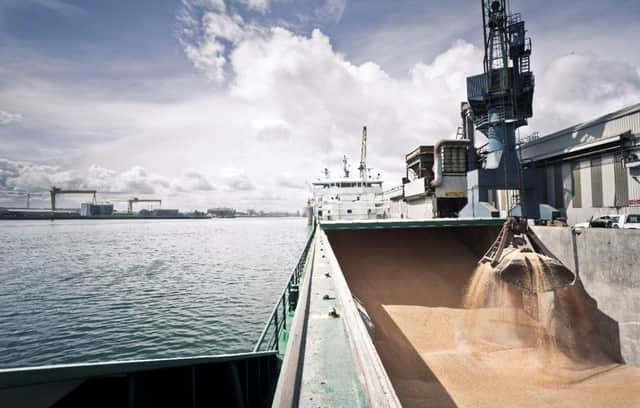Difficult winter ahead for many


Concerns about both quantity and quality of silage stocks will drive an increased requirement for forage replacer blends to stretch out the home grown feed and also for high quality rations to compensate for poor quality silage.
With record crops of most feed grains throughout the world the global market is awash with grain at relatively low prices but despite this the twin perils of currency and logistics could mean that Northern Ireland’s feed importers will have to compete to secure some of the key materials needed to support the industry through the coming winter.
Advertisement
Hide AdAdvertisement
Hide AdOne of the main challenges will be sourcing the supplies of digestible fibre required for ruminant feeds and particularly for the forage replacement rations. Recent years have seen a rapid growth in the trade in Soya Hulls from Argentina into Ireland – virtually replacing the 300,000 tonnes of citrus pulp which were the basis of ruminant rations some years ago. However new emerging markets for Hulls have meant that the available supplies have been spread more thinly and prices have been driven upwards by the increased demand from New Zealand, Morocco and South Africa.
Feed businesses have moved to secure alternatives such as sugar beet pulp from Russia where a bumper crop has produced a large exportable surplus. But the Russians are also enjoying a record wheat harvest – and wheat trumps sugar beet in the queue for rail transport. The wheat will move first and local importers will have to wait for their October/November sugar beet tonnages – having to fill in with more expensive supplies from France and England in the short term.
As the winter progresses local traders will be hoping that the Argentinians will move to recover some of their market for Soya Hulls to Ireland and will become more competitive as the other fibres move up in price in response to the increased demand.
Grain prices continue to be led by wheat with maize, coming in at £5 - £6 cheaper in spite of the EU import levy, proving popular with feed producers and likely to be a major ingredient in rations this winter. Soya meal, given current exchange rates, is also competitively priced in terms of recent history with the result that the cereal/soya rations used in the intensive sector could be relatively stable while ruminant rations based on by-products such as hulls, sugar beet and the corn products could see more upward price pressure in the months ahead.
Advertisement
Hide AdAdvertisement
Hide AdThe volumes of all commodities on the move around the world have put some life into the demand for ocean freight and ship owners are enjoying a significant uplift in rates following a few years in the doldrums. With 90% of our feed materials arriving through the ports this will be another element keeping feed prices firm through the coming winter.